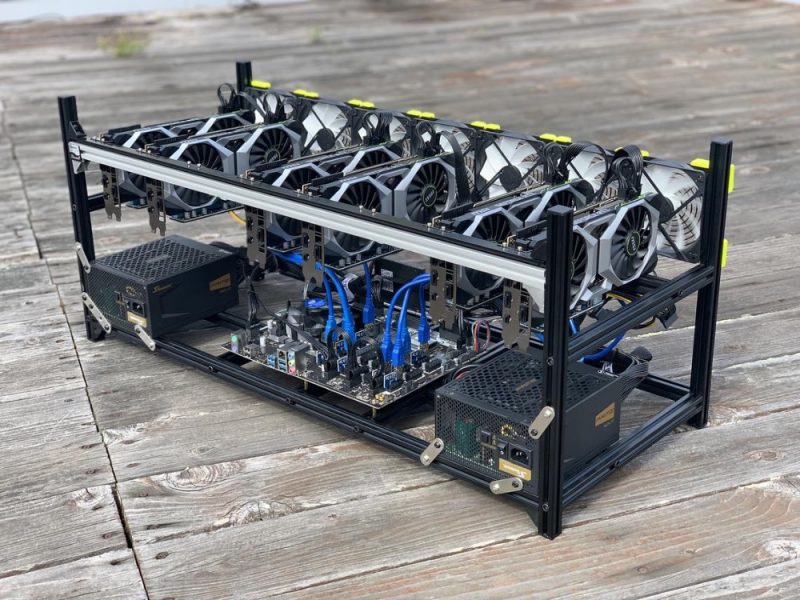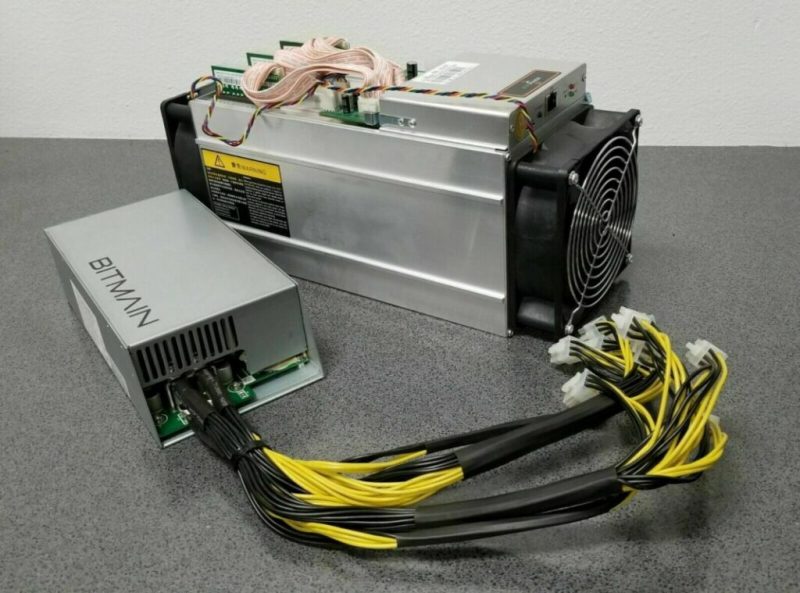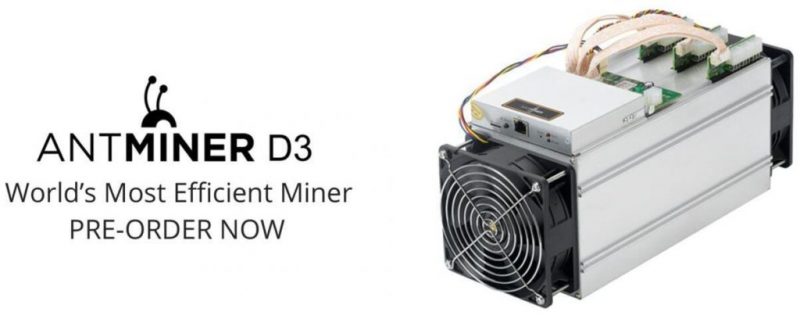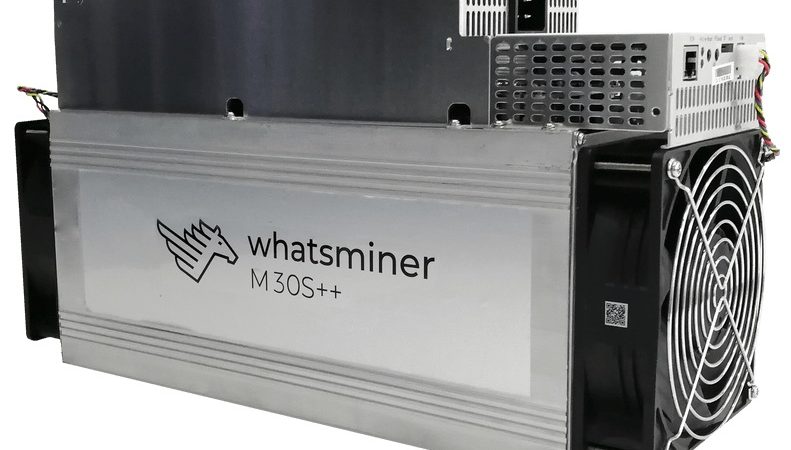Cryptocurrency is the talk of the town these days and has been on the rise for many years now. Emerged over a decade ago, cryptocurrencies caught mainstream attention a few years ago when Bitcoin soared to thousands of dollars in value. And, while many skeptics claimed that this newfound popularity won’t last for very long, it would be safe to say that crypto has defied those expectations in an emphatic manner.
Having said that, after a couple of years of Bitcoin domination within the crypto world, we’re starting to see a seismic shift within this space. Other cryptocurrencies like Dogecoin have seen an exponential increase in their value, resulting in some interesting rags to riches stories. And, while Dogecoin’s popularity can be contributed more to Elon Musk’s tweets, the Tesla founder has stated that he intends to make it viable for the future as well.
Also read: Best Cryptocurrency Exchange Platforms in 2021
Due to the rising fame of cryptocurrencies like Dogecoin and NFTs (Non-fungible tokens), people have started to drift away from Bitcoin. Not only that, but Tesla also announced that it intends to stop taking Bitcoin payments as the cryptocurrency has a pretty significant carbon footprint.
This, paired with the fact that BTC has become extremely hard to mine as we reach its limited available quantity, means that the focus has shifted to other cryptocurrencies like Dogecoin and Ethereum.
Mining these other currencies is much more viable and produces better returns than Bitcoin. In addition to that, the hardware requirement for cryptocurrencies like Litecoin and Dogecoin is also much lower. Starting out in the world of cryptocurrency mining can be daunting though. So, if you’re looking to mine some Bitcoin, Dogecoin, or any other cryptocurrency, we’ve got you covered. We’ve formulated a list of some of the best cryptocurrency mining hardware and the software to go with it.
Best Hardware for Cryptocurrency mining:
When it comes to finding the right hardware solution to mine cryptocurrency, there are a lot of factors involved in the decision-making. For instance, the cryptocurrency you choose to mine has a significant impact as some favor CPU power over GPU. However, you can still assemble a do-it-all machine but that obviously comes at an increased setup cost.
In addition to that, you also need to look at the electricity costs in your area and find out whether the amount of cryptocurrency that you’re mining is even profitable. Since a lot of powerful cryptocurrency mining rigs can consume a ton of electricity, they can actually turn a loss in some instances as well. So, it’s all about balancing the efficiency and power of your rig and optimizing your setup according to the electricity costs in your area.
Traditionally, many people have preferred using their gaming rigs to mine cryptocurrency. However, due to the rising costs of GPUs, if you don’t already have a powerful PC, that might not be the best option. In addition to that, a gaming rig is not laser-focused for crypto mining as it has to do a lot of other things as well. This can result in inefficiencies in your setup. Having said that, if you have a powerful enough gaming rig with a GPU as good or better than the NVIDIA GeForce RTX series, you’re already set to start out with your mining.
ASIC Miners
If you’re looking for a fresh start though, getting a specialized mining rig might be the way to go. Called ASIC (Application Specific Integrated Circuits) miners, these are specialized mining computers that serve no other purpose. These usually don’t utilize GPUs but can solve crypto blocks much faster. These can also be paired together for increased results.
However, these don’t exactly come very cheap and are also very power-hungry. So, finding the right balance between mining speed and power consumption is the name of the game here. Let’s take a look at some of the best ASIC miners that you can find on the market right now.
1. Bitmain Antminer S19 Series:
- Pros:
- Extremely popular so easy to find parts and tutorials.
- Not too expensive.
- Powerful with a hash rate (mining speed) of 115 TH/s
- Cons:
- Difficult to buy one these days.
- Power-hungry.
- Noisy.
Bitmain has been the market leader for ASIC miners ever since these became a thing way back during the original Bitcoin boom. The company has produced some of the best ASIC mining products over the years with the likes of Antiminer S7 enjoying years of market dominance. As the successor to the S7, the Antminer S19 promises the same top-of-the-line performance with a bit more efficiency.
Coming in three variants, the S19 is able to produce anywhere between 84 TH/s and 110 TH/s depending on the model you purchase. It’s not exactly cheap though as the prices start at over $2000 and go up to $3769 for the top variant.
In addition to that, power consumption is also a big talking point when it comes to these powerful ASIC miners. The S19 Antminer, for instance, pulls a whopping 3250 Watts of power, which, if electricity isn’t cheap in your area, can be quite significant.
Buy the Bitmain Antminer S19 here!
However, you can’t go better than the Bitmain Antminer S19 when it comes to the parts and support availability. With an easy-to-use GUI and direct plug into your mining pool, the Antminer S19 is very popular and thus easy to fix as well if anything goes wrong with it.
Having said that, since the Bitmain Antminer S19 is so popular, it also remains out of stock a lot. This leads to a lot of price gouging by scalpers and finding one second-hand for cheap is also next to impossible. So, if high power consumption isn’t an issue for you and you can actually find one on the market, you can’t really go wrong with an Antminer S19.
2. Antminer D3:
- Pros:
- Mining on a budget.
- Compact and tiny.
- High-efficiency rating.
- Good for starters.
- Cons:
- Not nearly as powerful as bigger miners.
- Power-hungry.
- Can be difficult to operate for first-timers.
If you just want to test the waters in the world of cryptocurrency mining, the Antminer D3 ASIC miner is the one for you. Built for those who want to start out and don’t want to spend thousands of dollars on a rig, the D3 is arguably your cheapest entry point into an ASIC miner. The little machine is only capable of producing 19.3 GH/s which is a far cry from the Antminer S19.
However, this machine costs 10 times less than the Antminer S19, coming in at only $380 USD. In addition to that, the Antminer D3 is also extremely compact and portable, meaning that you can take it with you to other places as well. And, with a power consumption rating of 1200 W, which is equivalent to your average hairdryer, this won’t shoot your electricity bill through the roof either.
Buy the Bitmain Antminer D3 here!
Having said that, the Antminer D3 can be quite tricky to use for newcomers as setting up this ASIC mining rig isn’t the easiest. With a little more knowledge though, this can be a perfectly viable entry-point for anyone looking to mine some cryptocurrency like Bitcoin or Dogecoin.
3. WhatsMiner M30S:
- Pros:
- Even more powerful than the Bitmain Antminer S19.
- Can operate in sub-zero temperatures.
- Significantly cheaper than Antminer S19. More power per dollar.
- Cons:
- Consumes more power than Antminer S19.
- Can be difficult to find on the market.
- Noisy.
If you’re unable to find a good deal on the Bitmain Antminer S19, the Whatsminer M30S series is a good alternative. With two variants, the M30S+ and M30S++, this ASIC cryptocurrency miner is a direct competitor to the S19 series. The company that makes these, MicroBT, claims that these miners offer a better value proposition than the mainstream Bitmain cryptocurrency miners.
And, their claim is somewhat true as well since the M30S++ is capable of pushing out a whopping 112 TH/s, which is higher than the S19. Not only that but the Whatsminer M30S series is also significantly cheaper than its more popular counterpart, coming in at $3,250 for the top variant. This makes it a better value for money as compared to the Antminer S19 series, thanks to more power at less price, on paper at least.
However, things start to look different when you take into account the electricity consumption as well. While it is much cheaper to buy the Whatsminer M30S upfront, the long-term running costs might actually be higher. It consumes more electricity than the AntMiner S19 and is less efficient as well. In addition to that, it is also quite noisy. So, if electricity costs are an issue for you, then you should probably look elsewhere.
One advantage that it does hold over the S19 though is its ability to work at temperatures as low as 5 degrees celsius. And, at those temperatures, you can only imagine the efficiency to be going over the roof.
GPU-powered Mining Rig:
- Pros:
- Uses normal PC components so easier to understand and operate.
- Can be cheaper than an ASIC miner.
- Parts can be recycled from a gaming PC as well.
- Cons:
- High power consumption.
- GPU shortage can lead to astronomical costs.
- Not as efficient as an ASIC miner.
If you don’t want to risk getting an ASIC miner or if they’re just not available on the market, you can just use the old-fashioned way of piecing together a powerful cryptocurrency mining rig instead. A cryptocurrency mining rig is essentially a gaming PC, except that it has multiple GPUs on a single specialized motherboard. So, pretty much every aspect of a mining rig is your standard gaming PC except the motherboard and the quantity of the GPUs you are plugging into it.
There are a lot of mining motherboards on the market but if you’re looking for something reliable, you can’t go wrong with the Asus B250 Mining Expert. The motherboard comes with 19 GPU slots, which is an insane amount. And, while you can have any number of GPUs on it, we recommend going with Asus’ instructional layouts of either 19, 13, or 11 cards on it.

Since a mining rig is mostly GPU-powered, you don’t need a powerful CPU to run it. So, you’d be fine with a mid-range older CPU like the Intel Core i5-6500, which can be found for cheap on the market.
Now, coming to the most important part of the rig, the GPU. Currently, there is a shortage of GPUs around the world and it can be extremely hard to find something like the new NVIDIA GeForce RTX 3000 series at retail price. And, while getting something much cheaper like an AMD RX 580 also does the job, we’d still recommend opting for something much more powerful. So, get a GPU that’s at least as good as the NVIDIA GeForce RTX 2060. And, if you can find an RTX 3080, that’s even better.
To connect these GPUs to the motherboard though, you’ll need something called a PCIe riser. These risers connect the big GPUs to the motherboard via a cable, since fitting all those powerful GPUs into that small space would be a recipe for disaster. You’ll need powered risers, with each one connecting a GPU to the motherboard. The FebSmart 16x to 1x riser is a good place to start.
Other than that, you can add 16 GB of 2400 MHz RAM, a 1 TB SSD, and power supplies to complete your build.
Best Cryptocurrency Mining Software:
Now that we’ve looked at the best hardware to start cryptocurrency mining, it’s time to look at the software side of things. For mining cryptocurrency, the software is not as important in terms of efficiency as the hardware. However, the additional features and the ease of use can definitely make a significant impact on the overall mining experience. So, here are some of the most user-friendly and feature-rich software that you can use with the hardware mentioned above:
1. EasyMiner:
- Great global chat system.
- Support for Bitcoin and Litecoin.
- Get started without any extra setup.
- Ability to use an ASIC miner.
If you’re new to the world of cryptocurrency mining, having easy-to-use software with a user-friendly GUI is a must. This is where EasyMiner comes in. It has vast support for different cryptocurrency coins like Litecoin and Bitcoin. In addition to that, it doesn’t require any extra knowledge of mining and you can just press the start button to get going.
The app works with ASIC cryptocurrency mining rigs as well and is completely free to use. And last but not the least, the app also comes with a chat system that allows you to contact other users if you’re having any trouble.
2. Cudo Miner:
- Automatic coin switching.
- Emphasis on security.
- Supports all kinds of mining including CPU, GPU, and ASIC.
- Tons of different controls and settings to optimize your usage.
- Detailed stats and earnings reports.
If you’re a bit more experienced and want to take your cryptocurrency mining to the next level, Cudo Miner might be the one for you. It is perfectly safe and secure, allowing multi-factor authentication for login. Cudo Miner also supports all 3 types of cryptocurrency mining and gives the user complete control over the allocation of resources. In addition to that, the app also supports automatic coin switching to increase earnings.
Cudo Miner is also incredibly advanced when it comes to its hashing algorithm. This lets users tweak and customize the mining to their liking. And, once you’re done, the app also displays in-depth stats and earnings which can be managed easily as well.
3. CGMiner:
- Advanced cryptocurrency mining tool.
- Cross-platform mining.
- Command-line based.
- Super lightweight.
CGMiner is an old-school cryptocurrency mining software that can be tricky to grasp for beginners, but great for advanced users. It is a purely command-line-based software, meaning that it doesn’t have any fancy graphical user interface. And, while that might be a deterrent for a lot of people, it also means that the cryptocurrency mining software is extremely lightweight and doesn’t take up any resources. This means that you can maximize your mining potential.
CGMiner is also great because it supports pretty much every mining hardware running every operating system. So, it works with ASIC, FPGA, CPU, and GPU mining on Linux, Mac, and Windows. The miner can also combine different types of miners and produce a combined output. And, finally, when you’re done, it provides crucial data for you to optimize your setup even more.






